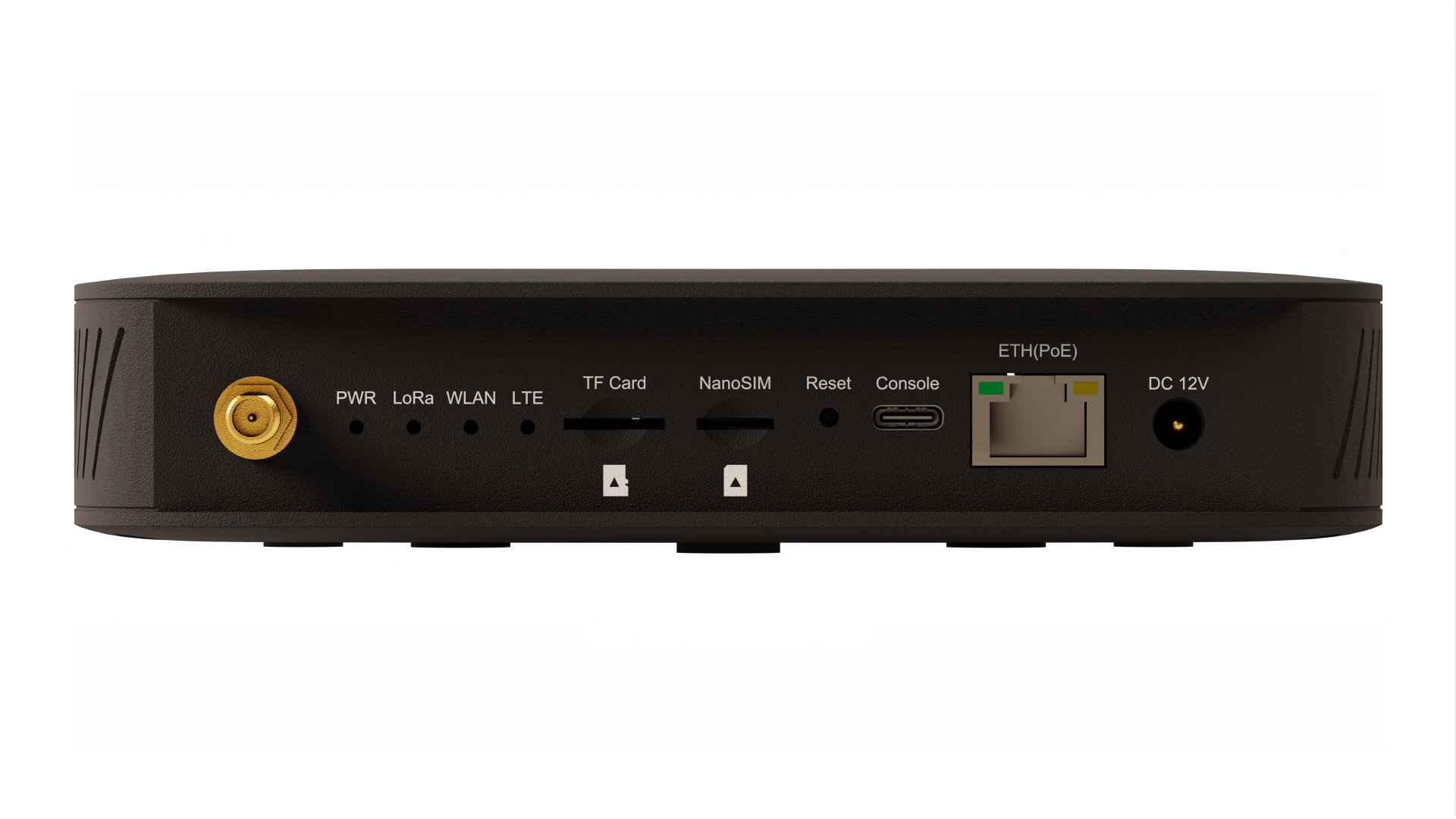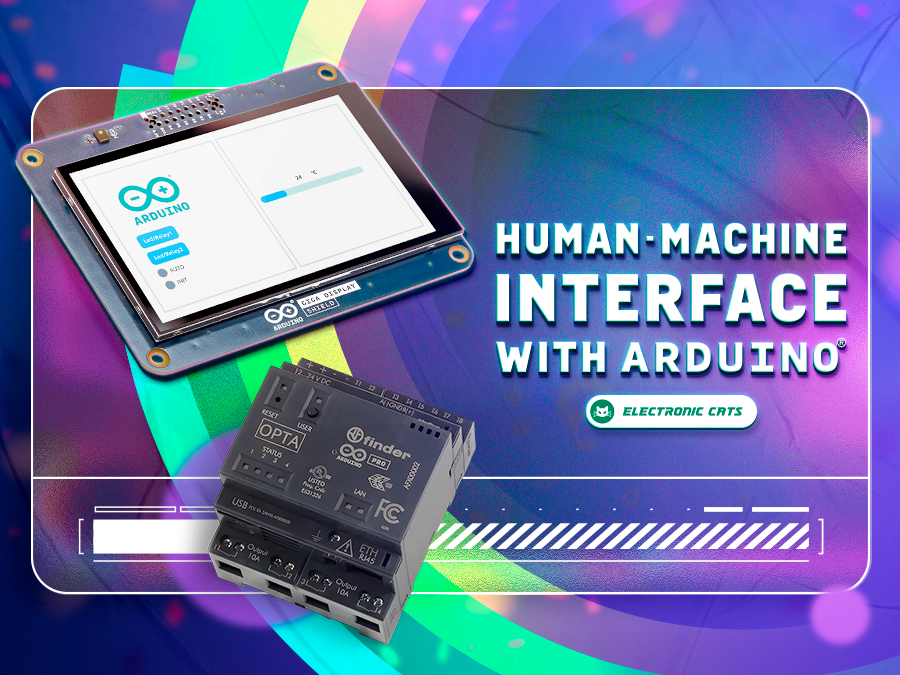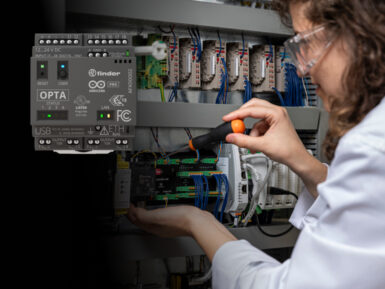
WisGate Edge Lite 2
Boost your industrial IoT solutions with a reliable and secure gateway for LoRaWAN® connectivity with deep indoor coverage, even in multi-story buildings.
Overview
The Arduino Pro WisGate Edge Lite 2 powered by RAKwireless™ ensures secure and reliable connectivity for a wide range of professional applications and is suitable for medium-sized to wide area coverage in industrial environments. Its deep coverage indoors makes it ideal for applications in multi-story buildings – such as apartment buildings, multi-level parking lots and factories.
It offers an intuitive out-of-the-box user experience for easy setup and diagnostics, as well as exhaustive tutorials and technical documentation, and comes with an enclosure designed for efficient cooling and optional DIN rail mounting.

Complementing the MKR and Portenta SOM boards, the Arduino IoT Cloud platform and the other LoRa® components in the Arduino ecosystem, WisGate Edge Lite 2 enables you to create and deploy complete and industrialized IoT/IIoT and I4.0 applications – wrapping both RAKwireless™’s specific expertise and Arduino’s smooth user experience into high-quality solutions that connect your LoRa® devices better than ever, from smart cities to logistics and building automation.
Key benefits include:
- Secure Ethernet, Wi-Fi or LTE connectivity
- Rapid setup and diagnostics, backup and data logging thanks to SD card slot
- Deep coverage indoors, ideal for multi-story buildings
- Enclosure designed for efficient cooling; it allows for wall and DIN rail mounting (optional)
- WisGateOS, powered by RAKwireless™, based on open source OpenWRT and fully customizable
- Ideal to implement private networks directly connected to cloud platforms; compatible with public networks
- Limited cabling for installation thanks to Power over Ethernet (POE)
- Comprehensive technical documentation by RAKwireless™
Looking for an outdoor gateway for LoRaWAN® connectivity?
Check out WisGate Edge Pro, designed to bring the same ease-of-use and reliability to your outdoor applications.

Need Help?
Check the Arduino Forum for questions about the Arduino Language, or how to make your own Projects with Arduino. If you need any help with your product, please get in touch with the official Arduino User Support as explained in our Contact Us page.
Warranty
You can find your board warranty information here.
Tech specs
| Processor | MT7628, DDR2 RAM 128 MB 32 MB flash memory |
| LoRa® |
|
| Interfaces |
|
| Connectivity |
|
| Dimensions / Weight |
|
| Software Features |
|
| Antennas | LoRa® with RP-SMA connector LTE Internal antenna Wi-Fi Internal antenna |
| Certifications | CE, FCC, ACMA/RCM, UKCA IP 30 rating |
Conformities
Learn more
Get Inspired

Learn how to build a complete HMI with Arduino that will allow you to interact with your projects in an intuitive and visual way.

OPC Unified Architecture – OPC UA in short – is a cross-platform, open-source machine-to-machine communication protocol for industrial automation. It was developed by the Open Platform Communications (OPC) Foundation and is defined in detail in the IEC 62541 standard. With the release of the Arduino_OPC_UA library we enable users to convert any product from our Arduino Opta range into an OPC UA-enabled device. Step-by-step guide to setting up OPC UA on Arduino Opta It’s as simple as uploading a single sketch onto your Opta and connecting it to an Ethernet network. Once uploaded, the OPC UA firmware exposes the Arduino Opta’s analog and digital inputs, the user button and LED (only Arduino Opta WiFi), as well as its relay outputs as properties that can be read from or written to using OPC UA. OPC UA communication is performed using OPC UA binary encoding via TCP sockets. Arduino_OPC_UA is a port of the Fraunhofer open62541 library implementing IEC 62541 in highly portable C99 for both Windows and Linux targets. One serious challenge during the porting of open62541 was to decide on sensible tradeoffs concerning RAM consumption, as using OPC UAs full namespace zero (NS0) requires up to 8 MB of RAM while the STM32H747 powering the Arduino Opta has a total of 1 MB of SRAM to offer – some of which already allocated by the the Arduino framework for the Arduino Opta. Expand functionality with Arduino Opta Modules and OPC UA integration Additionally, Arduino_OPC_UA supports the automatic discovery, configuration and exposure as OPC UA objects of the recently released Arduino Opta expansion modules. Currently three different expansion modules exist: Arduino Opta Analog Expansion (A0602), Arduino Opta Digital Expansion with electro-mechanical relay outputs (D1608E), and with solid-state relay outputs (DS1608S). During system start-up, the Arduino Opta’s expansion bus is queried for connected expansion modules and automatically configures them and









